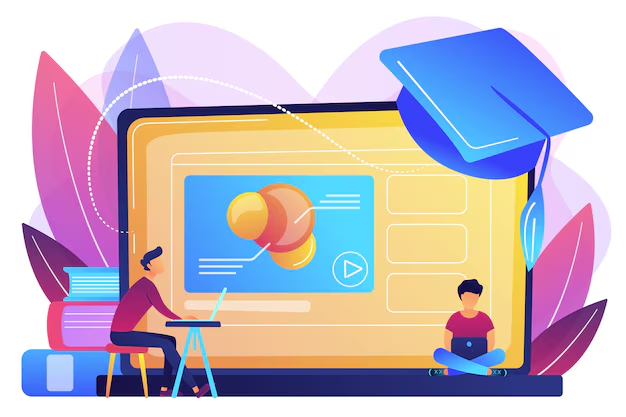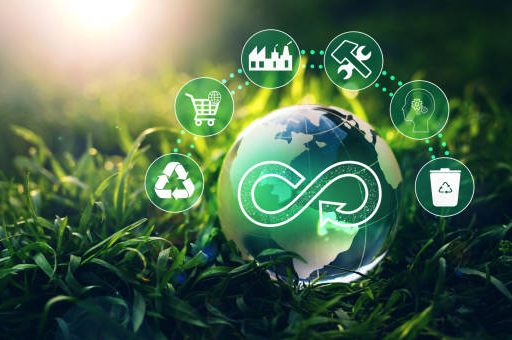As 2026 draws near, Digital Education 2026 is becoming a paradigm shift that combines digital platforms, e-learning, and artificial intelligence to close educational gaps worldwide. New teaching and learning methods that concurrently address fairness, relevance, and access are necessary in the post-AI world. In 2026, digital education will encompass more than just online lectures or distant learning; it will involve inclusive, scalable, and customized instruction using intelligent systems. In this situation, AI acts as a tutor rather than a substitute, helping students through feedback loops and adaptive routes, especially in underprivileged areas.
Digital platforms, on the other hand, provide access to isolated places where there may not be many physical schools. The potential of Digital Education 2026 to promote skill development, lessen inequality, and empower students worldwide is examined in this article. In order to ethically and sustainably fulfill this goal, we will look at important innovations, difficulties, success stories, and tactics.
AI-Driven Personalization & Learner Analytics
Learner analytics and AI-driven customization are two of Digital Education 2026’s most powerful features. Systems will adjust dynamically to each student’s speed, abilities, and gaps rather than using a curriculum that is one size fits all. In order to customize the subsequent module or assistance, AI evaluates quiz performance, reading duration, engagement metrics, and learning habits using real-time data. By doing this, frustration is avoided and retention is increased. Intelligent teaching systems and Squirrel AI are already in use by edtech companies and universities. Additionally, AI identifies students who are at danger of dropping out or becoming disengaged, allowing for early intervention.
Digital Education 2026 methods allow educational systems to provide remediation, scaffolding, and just-in-time help. Teachers may concentrate on mentoring and more in-depth advice as they are relieved of monotonous duties. It is important to note that customization aids in gap closure: learners in remote or poor environments gain from adapted information that meets them locally. The scenario is set for this approach to become widely used by 2026, given the exponential expansion of AI in education (estimated CAGR ~45%).
Scaling Access: E-Learning Platforms & Infrastructure
Global scaling of access is necessary to achieve digital education 2026. Strong e-learning systems, devices, and internet infrastructure are needed for it. According to reports, as demand for online, hybrid, and remote learning increases, the market for digital education is expected to reach $48.4 billion by 2026. There are programs in place in many areas to provide bandwidth, provide device subsidies, and implement language-specific learning management systems.
Furthermore, synchronous, mixed, and asynchronous models are being supported by digital platforms as they develop. To enhance engagement, these systems include VR/AR modules, peer collaboration, multimedia, and discussion boards.
During 2025–2026, universities increasingly adopt hybrid models, bridging physical and digital campuses.
Workday Blog

Comparison of delivery modes
| Mode | Strengths | Challenges |
|---|---|---|
| Fully online | Flexible timing, wide reach | Requires stable internet, self-discipline |
| Hybrid/blended | Combines in-person and digital | Organizational complexity, scheduling |
| Offline/low-bandwidth models | Access in low-infrastructure areas | Limited interactivity, content updates |
AI’s Role in Personalized Learning under Digital Education 2026
The way teachers and students learn is changing as a result of artificial intelligence. AI in digital education 2026 makes it possible to create individualized learning experiences based on each student’s unique strengths and shortcomings. Real-time student performance analysis via adaptive algorithms modifies the course’s content and level of difficulty. This guarantees mastery before continuing, allowing each student to go at their own speed.
Chatbots and AI tutors improve accessibility by providing round-the-clock academic assistance. Teachers can identify at-risk pupils and offer early treatments with the use of predictive analytics. AI-driven customisation can boost engagement and retention rates by as much as 45%, according to UNESCO (2025). Additionally, by lowering administrative workloads, these solutions free up instructors’ time to concentrate on mentoring and innovation. AI integration guarantees that learning becomes not only effective but also more inclusive and outcome-oriented as Digital Education 2026 develops.
Digital Skill Development for Future Careers
Preparing students for the changing labor market is one of the primary objectives of Digital Education 2026. Demand for digital literacy, coding, data analysis, and problem-solving abilities has increased as a result of automation and artificial intelligence. These days, educational institutions prioritize giving pupils these critical digital skills.
Theory and practical application are being connected through gamified learning tools, virtual labs, and simulation platforms. More than 70% of institutions currently offer AI or data science courses as part of their core curriculum, according to the OECD (2026). Platforms for lifelong learning have also grown in popularity, allowing professionals to upskill or reskill at any point in their careers. Digital education 2026 fosters flexibility, creativity, and ethical consciousness in addition to imparting technological knowledge. It guarantees a workforce prepared to innovate responsibly in an AI-driven economy by placing a strong emphasis on digital skills across all disciplines.
Bridging the Global Digital Divide
Accessibility is still a major issue in Digital Education 2026, despite the quick advancements. Millions still do not have access to contemporary gadgets or dependable internet. Governments, non-profits, and commercial companies are working together to offer affordable connection options in an effort to close this digital gap. Underprivileged communities are benefiting from programs like offline content libraries, solar-powered learning centers, and public Wi-Fi zones.
In remote places, inexpensive digital infrastructure increases student engagement by 30%, according to UNESCO’s Global Education Coalition (2025). Additionally, bilingual platforms and localized content guarantee inclusion. By placing classrooms in students’ pockets, mobile learning applications are revolutionizing distance learning.
True progress in Digital Education 2026 is defined by access equality. In addition to connecting each student, the objective is to provide them with the skills and information necessary for success throughout their lives. Nowadays, it is believed that equal access is both morally and financially necessary.

Challenges and Opportunities in Digital Education 2026
Digital Education 2026 has many advantages, but it also has some significant drawbacks. Among the most urgent concerns are cybersecurity risks, data privacy difficulties, and digital weariness. Institutions must implement strong data protection procedures in order to strike a balance between innovation and safety.
The preparedness of educators for the digital age presents another difficulty. In order to use digital technologies successfully, many instructors require upskilling. To bridge this talent gap, governments and academic institutions are funding professional development initiatives. According to Workday Blog (2025), student happiness is 60% greater in schools with qualified digital educators.
However, the prospects are enormous. New benchmarks are being set by blockchain-based credentials, AI mentorship programs, and virtual reality classrooms. Globally, the delivery, validation, and experience of knowledge are being redefined by Digital Education 2026 as technology develops.
The Future of Education
The goal of Digital Education 2026 is to build inclusive, sustainable learning ecosystems, which goes beyond technology. The conveyance of knowledge is becoming less important than comprehensive growth. Digital innovation with social and emotional learning will coexist in future learning settings.
Low-energy data centers, paperless systems, and green campuses all support sustainability objectives. When compared to old methods, digital transformation in education can save carbon emissions by 25%, according to the OECD (2026). Additionally, AI-powered solutions improve energy consumption in smart classrooms.
computer Education 2026’s long-term success depends on striking a balance between computer accuracy and human touch. When innovation, sustainability, and inclusion come together, education not only becomes a right but also a force for advancement on a global scale.
Conclusion: The Road to Digital Education 2026
Digital Education 2026 presents a promising way ahead as the world moves into the post-AI era: leveraging AI, scalable digital platforms, and inclusive design to bridge educational disparities. However, technology is insufficient on its own. Iterative design, teacher capacity training, egalitarian infrastructure, ethical frameworks, and local participation are all necessary for success.
Digital Education 2026 has the potential to improve skill development, promote lifelong learning, and provide underprivileged populations with high-quality education if implemented carefully. It is a daring, essential step toward a time where no student is left behind due to resource constraints, income, or geography.








